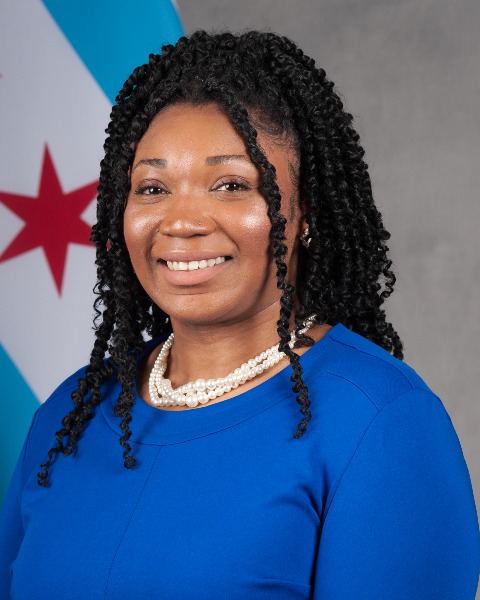Back
Population Diversity and Inclusive Design
Planning While Black: Identity, Legacy, and Built Environment
Sunday, April 2, 2023
9:00 AM – 9:15 AM CDT
Location: 113A
CM | .25
Division Endorsement: Planning and the Black Community Division, City Planning and Management Division

Nina Idemudia, AICP (she/her/hers)
Director - Chicago Recovery Plan
City of Chicago Department of Planning and Development
Chicago, Illinois
Moderator and Speaker(s)
What does it mean to plan while Black? My experiences as a Black woman have shaped my complicated relationship with the field I love but which has caused me so pain.
As a native Detroiter and a Black woman, I understand how the built environment shapes the lives of society’s most vulnerable populations. Growing up, my siblings and I rode a bus for more than an hour every morning to school in suburban Harper Woods. I did not know the words to describe the inequity I saw as I looked out the window at empty lots and abandoned commercial buildings. As I got closer to school, activity increased and blocks were lined with nice houses and manicured lawns, with mostly white families inside.
That experience taught me that all places were not created equal. I later learned that my neighborhood was a byproduct of decades of public disinvestment and high unemployment caused by redlining; a faltering, one-industry economy focused on cars; political corruption; and a declining tax base induced by white flight. Learning this history motivated me to find my purpose in a profession that I believed could undo the harm done to communities for so long.
NPC Peer Reviewers assigned this presentation a learning level of Intermediate. For more on learning-level descriptions, visit our General Information Page.
As a native Detroiter and a Black woman, I understand how the built environment shapes the lives of society’s most vulnerable populations. Growing up, my siblings and I rode a bus for more than an hour every morning to school in suburban Harper Woods. I did not know the words to describe the inequity I saw as I looked out the window at empty lots and abandoned commercial buildings. As I got closer to school, activity increased and blocks were lined with nice houses and manicured lawns, with mostly white families inside.
That experience taught me that all places were not created equal. I later learned that my neighborhood was a byproduct of decades of public disinvestment and high unemployment caused by redlining; a faltering, one-industry economy focused on cars; political corruption; and a declining tax base induced by white flight. Learning this history motivated me to find my purpose in a profession that I believed could undo the harm done to communities for so long.
NPC Peer Reviewers assigned this presentation a learning level of Intermediate. For more on learning-level descriptions, visit our General Information Page.
Learning Objectives:
- Understand how the legacy of anti-blackness and racism has shaped the built environment and how Black planning professionals are undoing the harm caused by past disenfranchisement.
- Learn how BIPOC planners can and should find joy lifting up their communities, despite planning practices excluding Black professionals from being fully present in and represented by the planing profession.
- Learn concrete ways to undo the harm created by planning.
